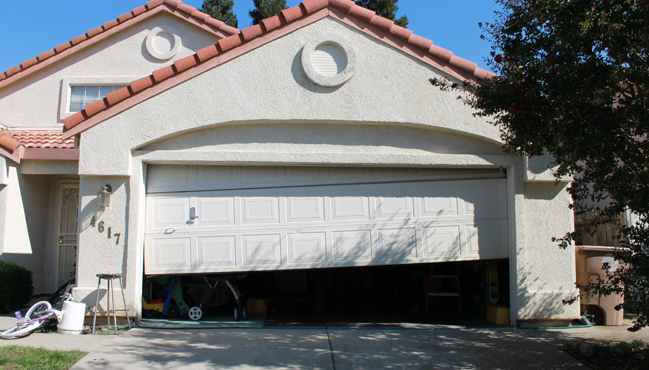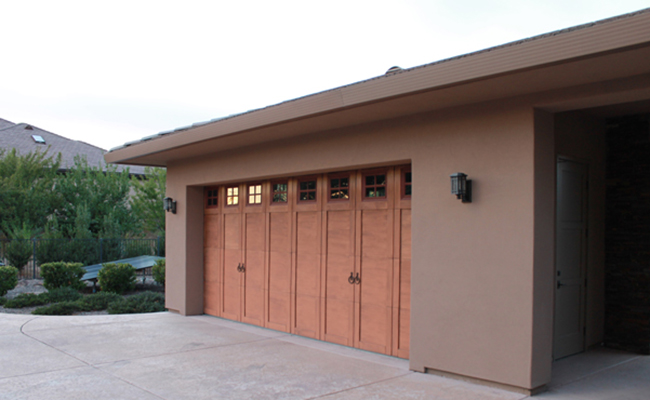A garage door opener with a battery backup is an essential feature for any homeowner who values security and convenience. Power outages can happen unexpectedly, leaving you without the ability to open or close your garage door. This can be particularly problematic if you rely on your garage door as the primary entry and exit point to your home. A battery backup system ensures that your garage door remains functional during a power outage, providing peace of mind and uninterrupted access to your home.
In addition to maintaining access during power outages, a battery backup system also enhances safety. In emergencies, such as severe weather or fires, the ability to quickly and safely exit your home can be crucial. Without a battery backup, you may find yourself unable to open the garage door, potentially trapping you or your vehicle inside. This feature is not just a convenience—it’s a critical safety measure that ensures your garage door remains operational when you need it most.
How a Garage Door Opener Battery Backup Works
A battery backup system for a garage door opener typically consists of a rechargeable battery that is built into or connected to the garage door opener unit. When the power is on, the battery remains charged, ready to take over in case of a power failure. When the power goes out, the battery automatically kicks in, allowing the garage door opener to continue operating as usual. Most battery backups can provide power for several cycles of the garage door, enough to get you through short-term outages.
These systems are designed to work seamlessly with your existing garage door opener, whether it’s a chain-drive, belt-drive, or screw-drive model. Some modern garage door openers come with a battery backup already integrated, while others may require an additional purchase and installation. The backup battery is typically housed within the opener unit, and many models feature an indicator light or alarm to notify you when the battery is low or needs replacement.
Why Battery Backup is Becoming a Standard Feature
As of recent years, battery backup systems for garage door openers have become a standard feature in many areas, especially where power outages are common due to natural disasters or unreliable power grids. In some places, local building codes or regulations now require new garage door openers to include a battery backup system, particularly in homes where the garage is the primary point of entry. This requirement underscores the importance of maintaining access and safety during emergencies.
The increasing adoption of battery backup systems is also driven by consumer demand for greater convenience and security. Homeowners are becoming more aware of the risks associated with power outages and are looking for solutions that provide reliable access to their homes. As a result, manufacturers are incorporating battery backup systems into more models, making it easier for homeowners to find an opener that meets their needs.
Choosing the Right Battery Backup for Your Garage Door Opener
When selecting a battery backup system for your garage door opener, there are a few key factors to consider. First, ensure that the battery backup is compatible with your existing garage door opener model. While many newer openers come with built-in battery backups, older models may require a specific type of battery or an external backup unit. Check with the manufacturer or consult your garage door technician to determine the best option for your setup.
Another important consideration is the battery’s capacity, which determines how many cycles the door can complete on a single charge. Most battery backups can handle 20-30 cycles during a power outage, which is typically sufficient for short-term disruptions. However, if you live in an area prone to extended outages, you may want to look for a battery with a higher capacity. Additionally, consider the battery’s lifespan and replacement cost—backup batteries generally last 3-5 years, after which they’ll need to be replaced to ensure continued reliability.
Step-by-Step Guide to Installing a Battery Backup
Installing a battery backup for your garage door opener is a relatively straightforward process, especially if your opener is already compatible with battery backups. Here’s how to do it:
- Turn Off Power to the Garage Door Opener: Before you begin, unplug the garage door opener to ensure your safety while working on the system.
- Locate the Battery Compartment: On most garage door openers, the battery compartment is located on the side or back of the opener unit. Open the compartment cover to access the battery housing.
- Install the Battery: If your garage door opener came with a battery, simply place it into the battery compartment, making sure it’s securely connected to the terminals. If you’re adding a backup battery to an existing opener, follow the manufacturer’s instructions for connecting the battery to the opener’s circuit board.
- Secure the Battery Compartment: Once the battery is in place, close the compartment cover and ensure it’s securely fastened. This will protect the battery from dust and debris.
- Restore Power and Test the System: Plug the garage door opener back in and restore power. Test the battery backup system by unplugging the opener again and attempting to open and close the door. If the system is functioning correctly, the door should operate as usual using battery power.
- Monitor the Battery: Many garage door openers with battery backups have an indicator light or alert system to notify you when the battery needs to be charged or replaced. Check the status regularly to ensure the battery is always ready to perform when needed.
Maintenance Tips for Battery Backup Systems
To keep your garage door opener’s battery backup system in top working condition, regular maintenance is key. Start by testing the battery backup every three to six months by unplugging the opener and running the door a few times on battery power. This ensures the battery is holding a charge and that the system will work when you need it.
Additionally, keep the battery compartment clean and dry to prevent any corrosion or damage to the battery terminals. If you live in an area with extreme temperatures, consider insulating the garage door opener unit, as both very high and very low temperatures can affect battery performance. Finally, be mindful of the battery’s lifespan—most batteries last between three to five years, so plan to replace it within that time frame to ensure uninterrupted operation.
Conclusion
A battery backup system for your garage door opener is an essential feature that enhances both safety and convenience. By ensuring that your garage door remains functional during power outages, you can avoid being locked in or out of your garage when you need access the most. Installing a battery backup is a simple process that provides peace of mind and continuous operation of your garage door, even in emergencies. Regular maintenance and timely battery replacement will ensure that your system is always ready to perform when needed, keeping your home secure and accessible.








